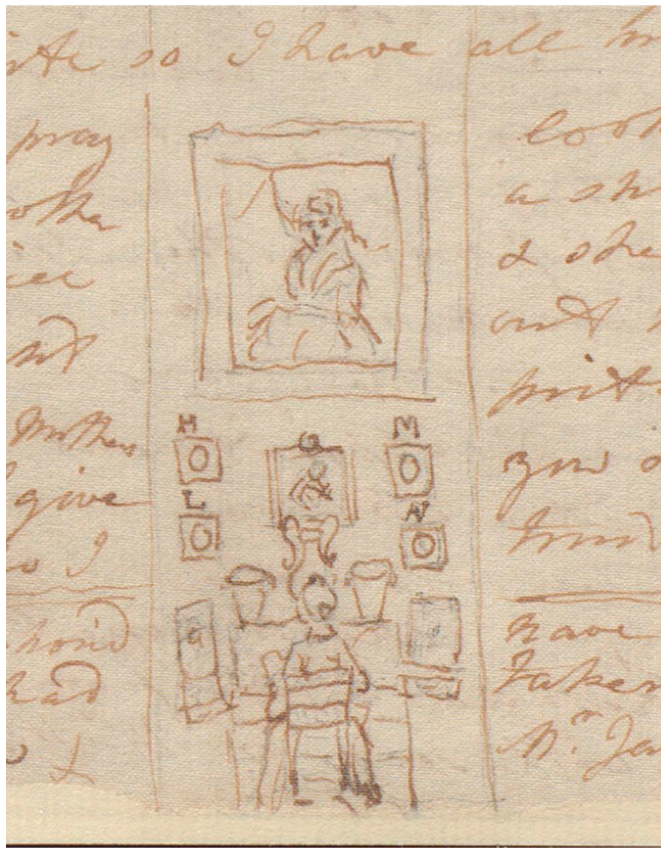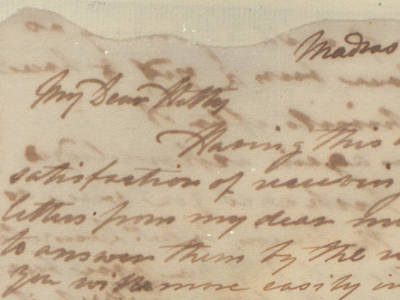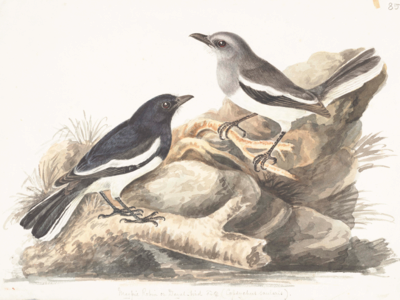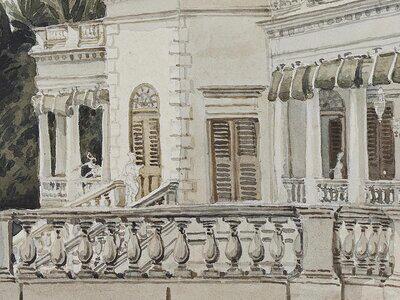The Letters

Writing the letters
In a letter to her mother in 1802, Elizabeth Gwillim included a sketch of herself at her writing desk. Hand-written letters were the only means of communication between India and England at the beginning of the 19th century.
It took about four to six months for a letter to reach England, and the same for a reply, or even longer. Sometimes the letters the sisters sent were lost, when the ship carrying them sank in a storm, or was captured by the French - the English and the French were at war during this period.
The letters to their sister Hester (Hetty) James and mother Esther Symonds are long and informal, and include observations on the landscape and the environment, natural history, architecture, food and fashion, Madras society, politics, and the East India Company.


Transcribing the letters
There are almost 700 pages in the sisters' correspondence preserved at the British Library. The handwriting can be difficult to read, with words crossed out or added between the lines. Some letters are torn with pieces missing. In some the ink has blurred. Students at McGill transcribed the letters so that they can be more easily read and are searchable.
The sisters' correspondence is not available on this website. To read a complete transcription of all the letters, visit The Gwillim Project website (see here for more details).




